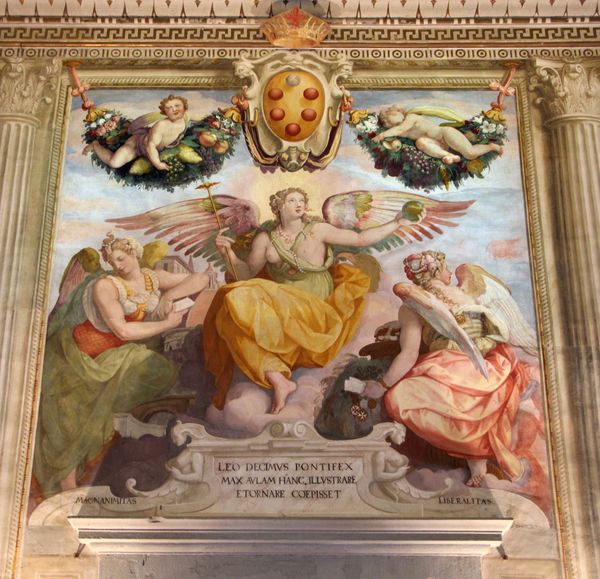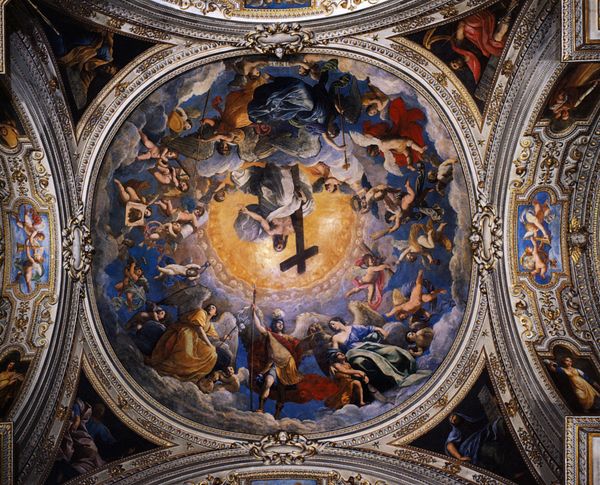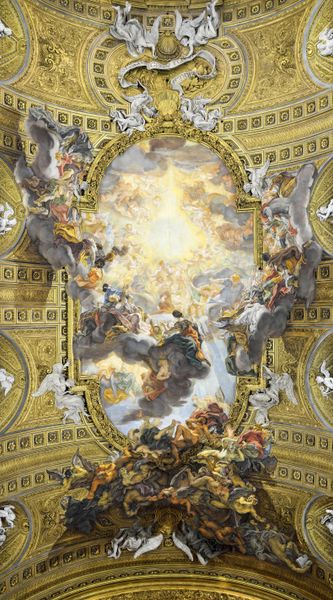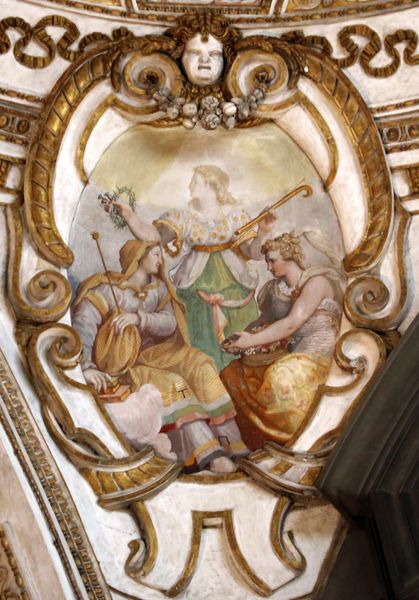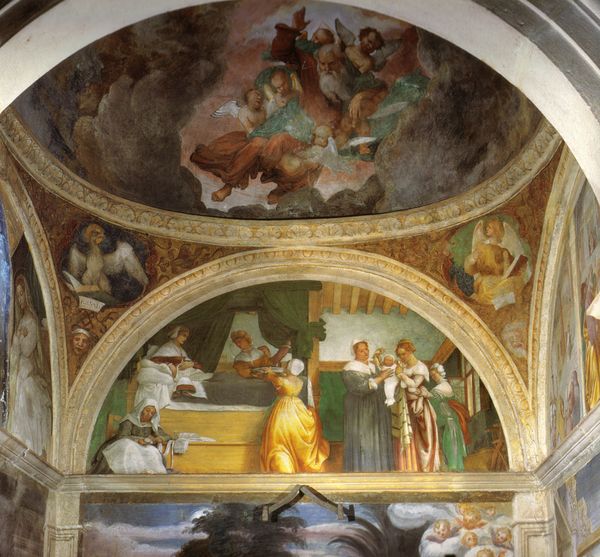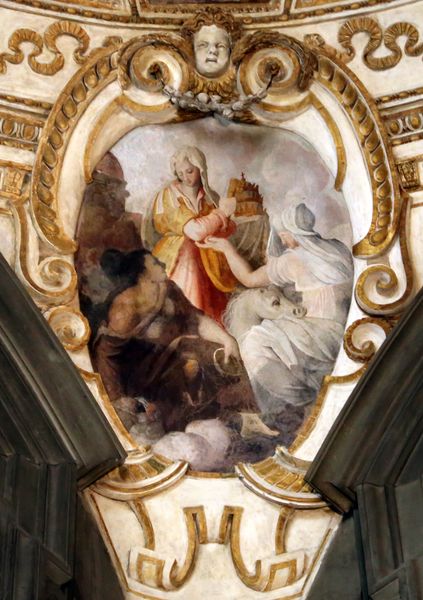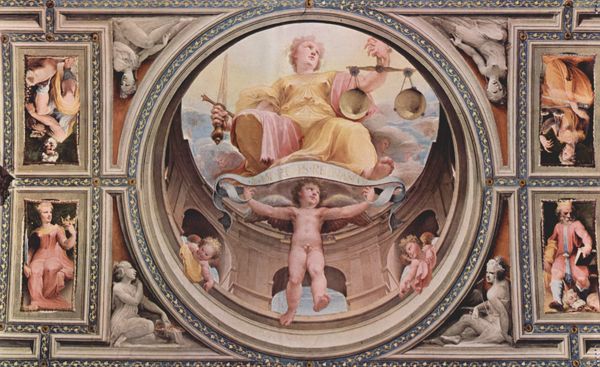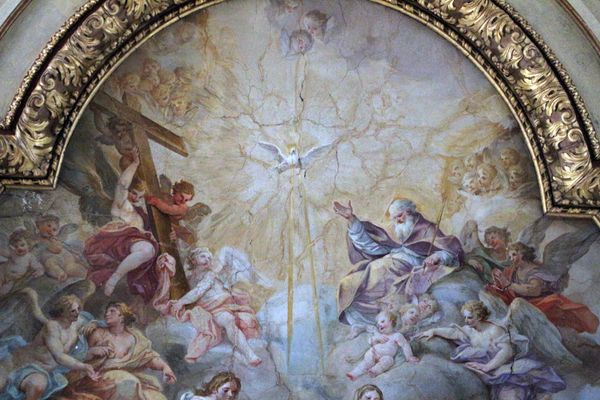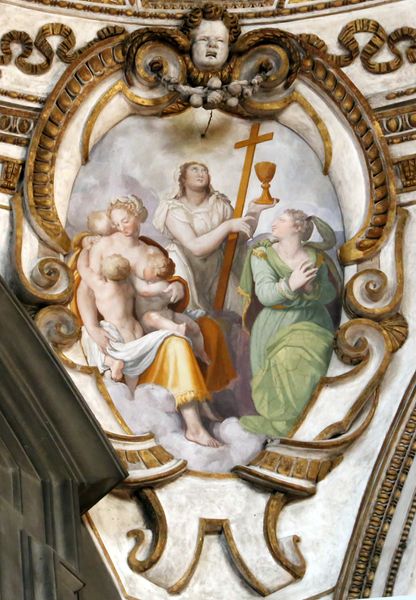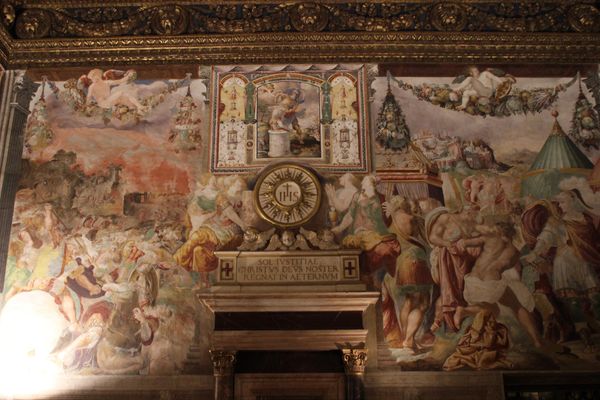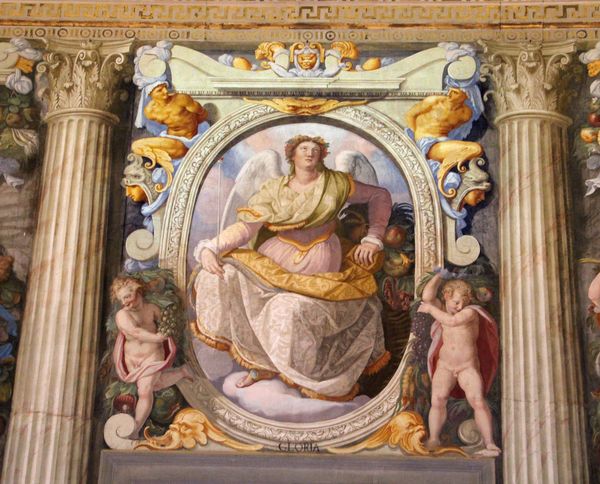
painting, oil-paint, fresco
#
gouache
#
allegory
#
baroque
#
painting
#
oil-paint
#
fresco
#
oil painting
#
coloured pencil
#
underpainting
#
history-painting
#
watercolor
Copyright: Public domain
Editor: This is Placido Costanzi's "The Immaculate Conception" from 1730, and it looks like oil paint, maybe even a fresco. It’s so ethereal! All those figures floating on clouds... it makes me wonder about the sheer labor involved in producing something like this, especially at that scale. What can you tell me about it? Curator: It's compelling to consider the fresco tradition within a materialist framework. How does the quick-drying nature of fresco, its reliance on specific plaster recipes and pigment interactions, shape the iconography itself? Look closely; the vibrant blues are costly. Editor: So the materials themselves could influence the subject matter? Curator: Absolutely. Think about ultramarine, derived from lapis lazuli. Its expense dictated its usage – often reserved for the Virgin's robes. The availability and cost of materials impact the visual language and the very stories being told. Who would have had access to create works like this, and who was the intended consumer of this idealized image? Editor: That makes a lot of sense. The people funding this type of work must have been incredibly wealthy to afford these resources and skills, right? And that would, of course, inform its overall meaning. Curator: Precisely. And think about the physical labor involved in preparing the walls, mixing pigments, and applying the paint, often by numerous assistants. These workshops and their economics also defined artistic production in this period. Editor: This perspective gives me so much to consider. Thank you for connecting materiality with such powerful images, It's so useful. Curator: Understanding the material conditions of artistic production reveals so much about the historical, social, and economic forces at play. A different way to read familiar images.
Comments
No comments
Be the first to comment and join the conversation on the ultimate creative platform.


